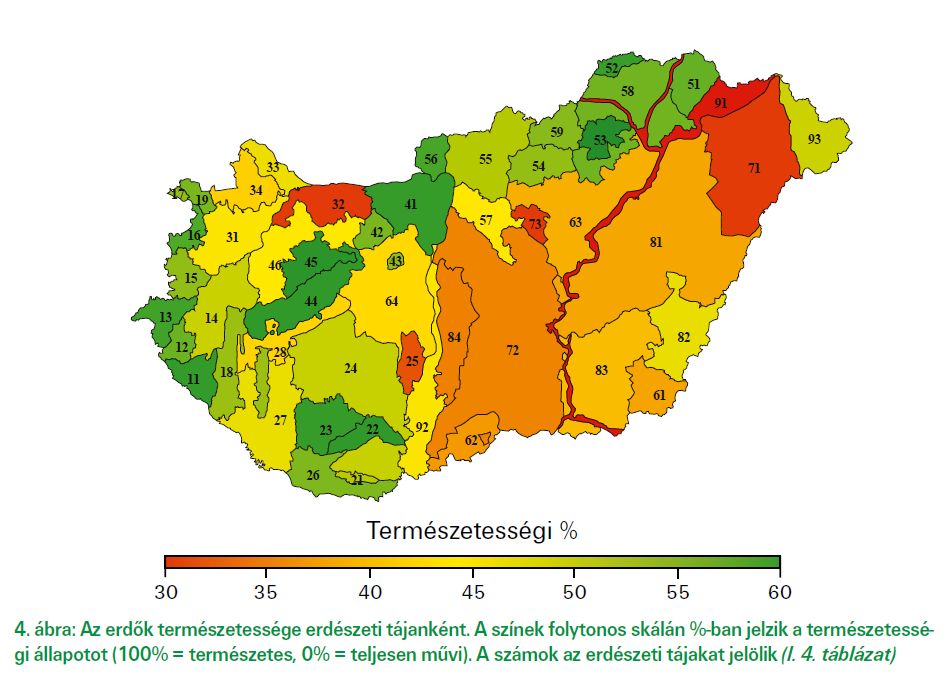
Forests
This indicator is determined by the size of forest areas, the extent of timber production and afforestation, as well as the degree of naturalness of forests.
The size of forests is growing slowly; the extraction rate is smaller than the increment, but the naturalness of the forest stock remains unsatisfactory. The health condition of forests has improved in recent years. 22 percent of Hungarian forests are located in nationally protected conservation areas. This proportion has remained largely unchanged since the designation of protected areas in the 1990s.The largest protected forest area - in line with the size of the total forest area - is in Borsod-Abaúj-Zemplén county (72.4 thousand hectares), whereas the smallest area is located in Békés county (2.3 thousand hectares).The mid-2000s saw the designation of the Natura 2000 areas, involving a further 420 thousand hectares. Today 42 percent of the forests enjoy some kind of conservation protection status.
Logging
Afforestation
Health of forests
Naturalness of forests

The criteria used to evaluate the naturalness of forests consist in the free realization of natural processes going on in the forests as well as the existence of features shaped by these processes. Naturalness is interpreted as a continuous variable, where one of the extremes is provided by the artificial state (0% naturalness), whereas the other extreme is is that of the natural state (100% naturalness).
